Hoya nomenclature is the systematic and scientific way of naming and classifying Hoya plants. This complex system allows us to accurately identify, classify, and discuss these amazing plants, which are known for their waxy leaves, stunning flowers, and sometimes fragrant blooms. With over 500 recognized species and numerous hybrids, a clear system of naming and classifying Hoyas is essential for enthusiasts, botanists, and horticulturists. This guide will delve deep into the intricate world of Hoya nomenclature, its history, structure, importance, practical applications, and even some of the challenges associated with the naming system.
What is Hoya Nomenclature?
Hoya nomenclature is the scientific system that guides the naming and classification of Hoya plants, adhering to the standards of the International Code of Nomenclature (ICN). This system uses binomial nomenclature, a two-part naming method introduced by Carl Linnaeus in the 18th century. Every plant receives a unique scientific name, which includes:
- Genus: The broader category grouping related plants with shared characteristics. In the case of Hoyas, all members belong to the genus Hoya.
- Species: The specific identifier that distinguishes one type of Hoya from another within the same genus. (e.g., Hoya carnosa or Hoya obovata).
By using this system, we can eliminate the confusion associated with local or common names, ensuring that we can all talk about the same plant, no matter where in the world we are.
A Brief History of Hoya Nomenclature
The genus Hoya was named in honor of Thomas Hoy, a British botanist and horticulturist of the 18th century, who served as a gardener for the Duke of Northumberland, and had a special interest in tropical plants. The first formal classification of Hoyas took place during the late 18th and early 19th centuries, when European botanists embarked on explorations into Asia and Australia. Figures like Robert Brown, a Scottish botanist who worked at the British Museum, and Sir Joseph Dalton Hooker, a renowned botanist and explorer, made significant contributions. Brown named several Hoya species in the early 1800s, which has laid a foundation for future Hoya taxonomy work.
The study of Hoya taxonomy has expanded as botanists discovered and classified new species and hybrids, especially with the advent of molecular research, often leading to reclassifications based on new data. The rise of modern molecular and DNA testing has challenged previously held assumptions about Hoya taxonomy. The ability to compare the genetic material has enabled more precise classifications and a better understanding of relationships between species.
Why is Hoya Nomenclature Important?
1. Accurate Plant Identification
Hoyas have multiple common names, varying across regions and languages. Relying on these can cause confusion. Scientific names provide clarity and ensure that everyone refers to the same plant. For example, Hoya carnosa is commonly called the Wax Plant or Porcelain Flower, but its scientific name is consistent worldwide, thereby preventing confusion.
2. Classification of Species and Hybrids
Hoyas display incredible diversity, including species, subspecies, varieties, and hybrids. Accurate nomenclature allows botanists and collectors to understand the relationships between the plants and trace the lineage of hybrids and cultivars back to their parental species. This allows for better understanding of the different physical characteristics and environmental needs of each plant.
3. Conservation and Research
Many Hoya species face threats from habitat destruction. Accurate naming and classification are crucial for conservation efforts, allowing us to document, protect, and preserve these plants in their natural habitats, as well as understand their natural ranges and ecology.
4. Enhanced Care and Cultivation
Different Hoya species and cultivars have distinct care requirements. By knowing the precise name of a Hoya, plant owners can research its particular needs, ensuring that it thrives by providing customized care. This also helps determine the proper environments that they need for temperature, light, water and humidity.
How Hoyas Are Named
Hoyas are named following the rules outlined in the International Code of Nomenclature for Algae, Fungi, and Plants (ICN). This is a set of regulations that ensures that all plants are classified and named consistently.
1. The Genus Name: Hoya
All members of the Hoya family are grouped under the genus Hoya, plants with similar features such as waxy leaves and umbel-shaped flower clusters. The genus is always capitalized and italicized.
2. The Species Name
The species name follows the genus and specifies a unique type of Hoya. Examples of species names are:
- Hoya carnosa: Known for its thick, glossy leaves and fragrant flowers.
- Hoya kerrii: Distinctive with its heart-shaped leaves, often seen during Valentine’s Day.
The species name is always in lowercase and is italicized.
3. Subspecies and Varieties
Some Hoyas display naturally occurring variations within a species and these are designated as subspecies (ssp. or subsp.) and varieties (var). For example:
- Hoya carnosa var. tricolor: A variety of Hoya carnosa which displays unique colors in its leaves.
- Hoya lanceolata ssp. bella: Formerly called Hoya bella, but was reclassified as a subspecies of H. lanceolata.
Subspecies and varieties always follow the species name and have the abbreviations before the name, followed by the name of the variation.
4. Hybrids and Cultivars
Hybrids occur when two different species of Hoya are cross-pollinated while cultivars are plants bred by people for certain traits. These are often given unique names in quotation marks:
- Hoya carnosa ‘Krimson Queen’: A variegated cultivar of Hoya carnosa.
- Hoya ‘Mathilde’: A hybrid that was created from Hoya carnosa and Hoya serpens.
When hybrids are given a name, the female parent is named first, with an “x” to indicate that it is a hybrid, which may be listed at the beginning of the name (x Hoya ‘Pinkie’). If the plant is a cultivar and not a hybrid, the cultivar name is written in single quotes and the parentage is not indicated.
5. Synonyms in Hoya Nomenclature
Over time, some Hoyas have been reclassified, which may mean multiple names for the same plant. These are called synonyms. For example, Hoya bella is now Hoya lanceolata ssp. bella, but you may still see it listed as its old name. These reclassifications often occur due to new morphological evidence or molecular data. The ICN aims to minimize this by adhering to the principle of priority, which states that the first published name for a plant is the one that should be used, although this is not always followed and results in synonyms.
Popular Hoya Species and Their Names
1. Hoya carnosa
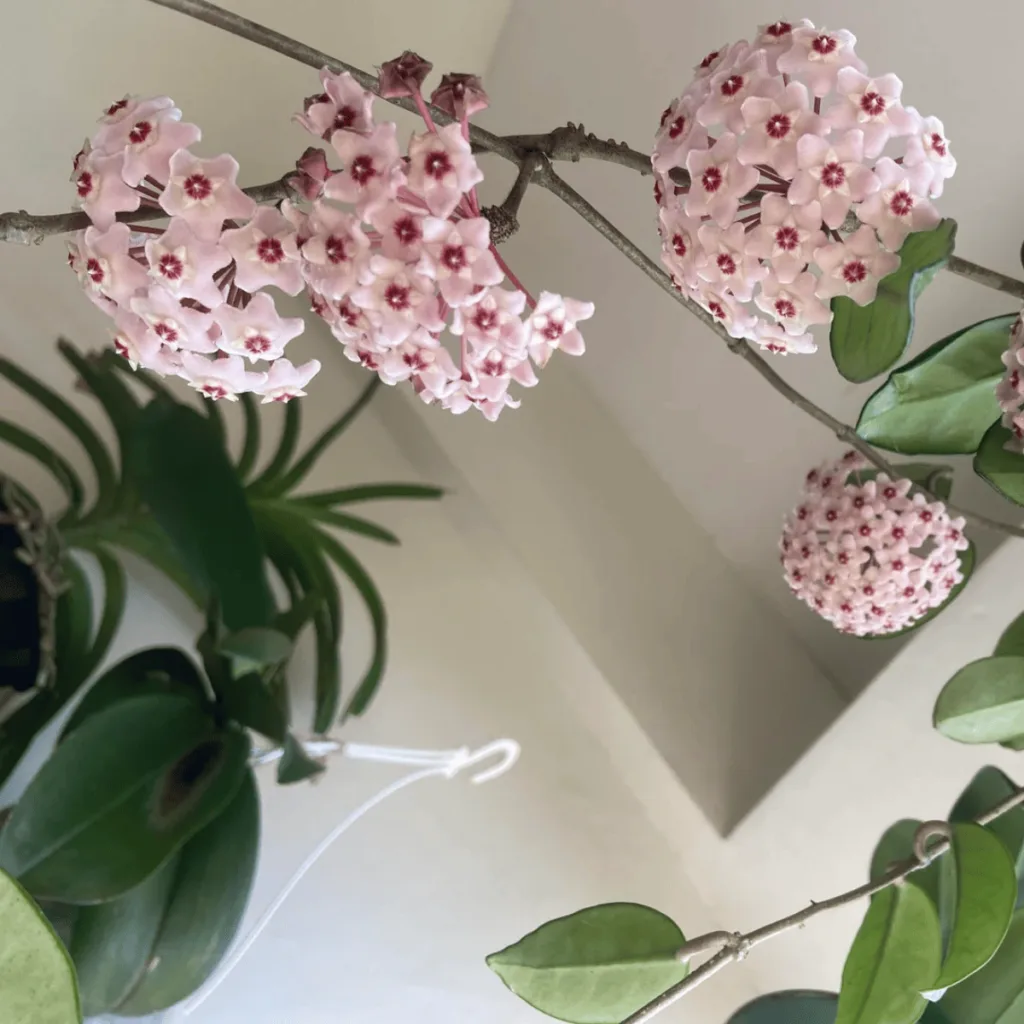
Features: Known for its vigorous growth, star-shaped flowers, and ease of care.
Meaning: “Carnosa” means “fleshy” and it refers to the plant’s thick, waxy leaves.
2. Hoya kerrii
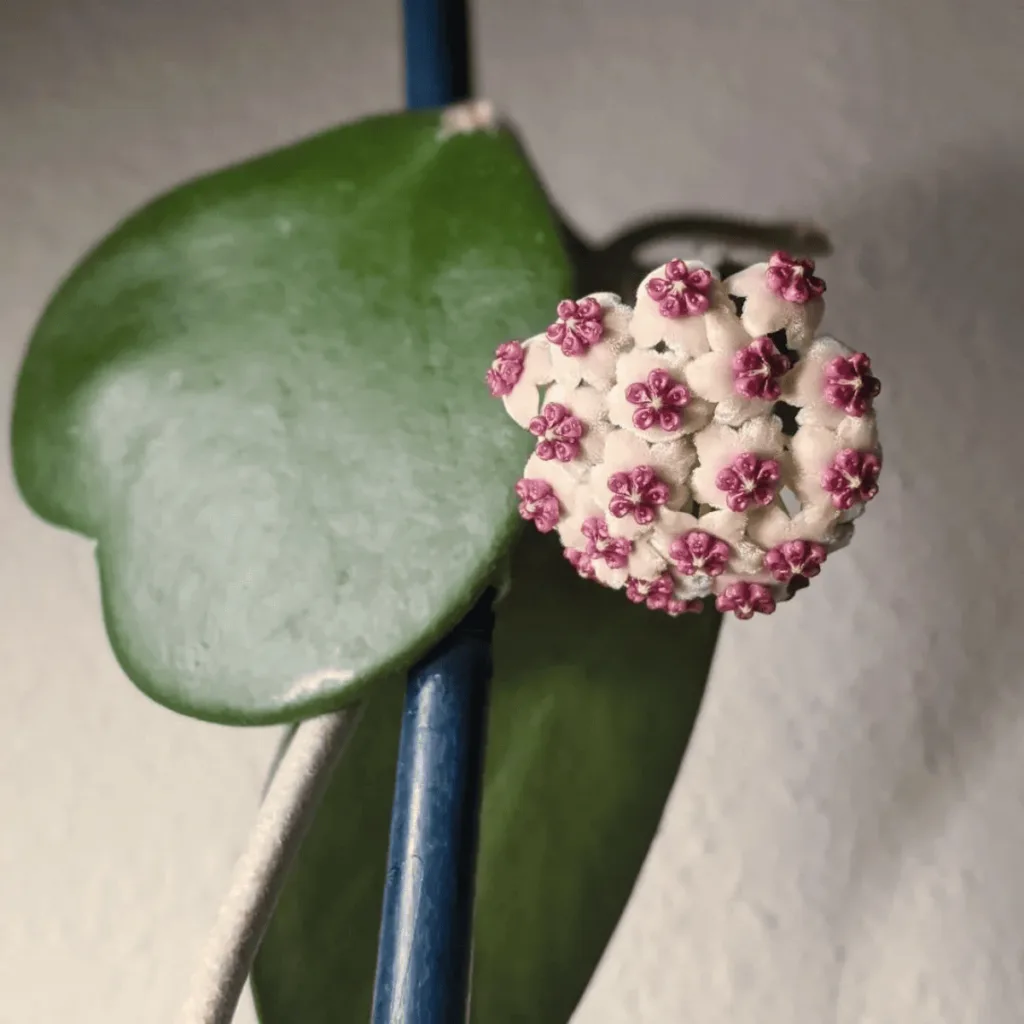
Features: Has characteristic heart-shaped leaves.
Meaning: Named for Arthur Kerr, a British botanist who collected plant specimens in Thailand in the early 20th century.
3. Hoya pubicalyx
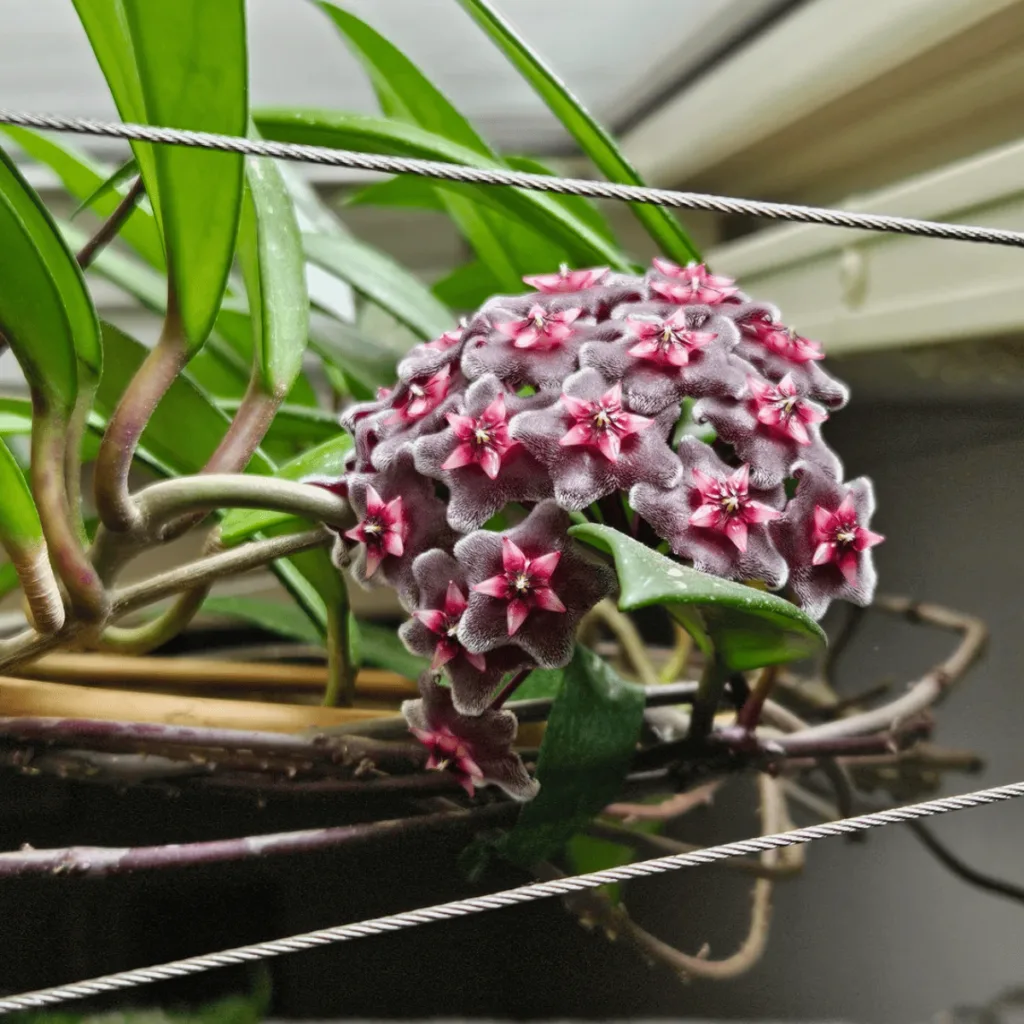
Features: Known for its fast-growing nature, colorful leaves, and showy blooms.
Meaning: The name refers to the plant’s hairy calyx (a part of the flower).
4. Hoya obovata
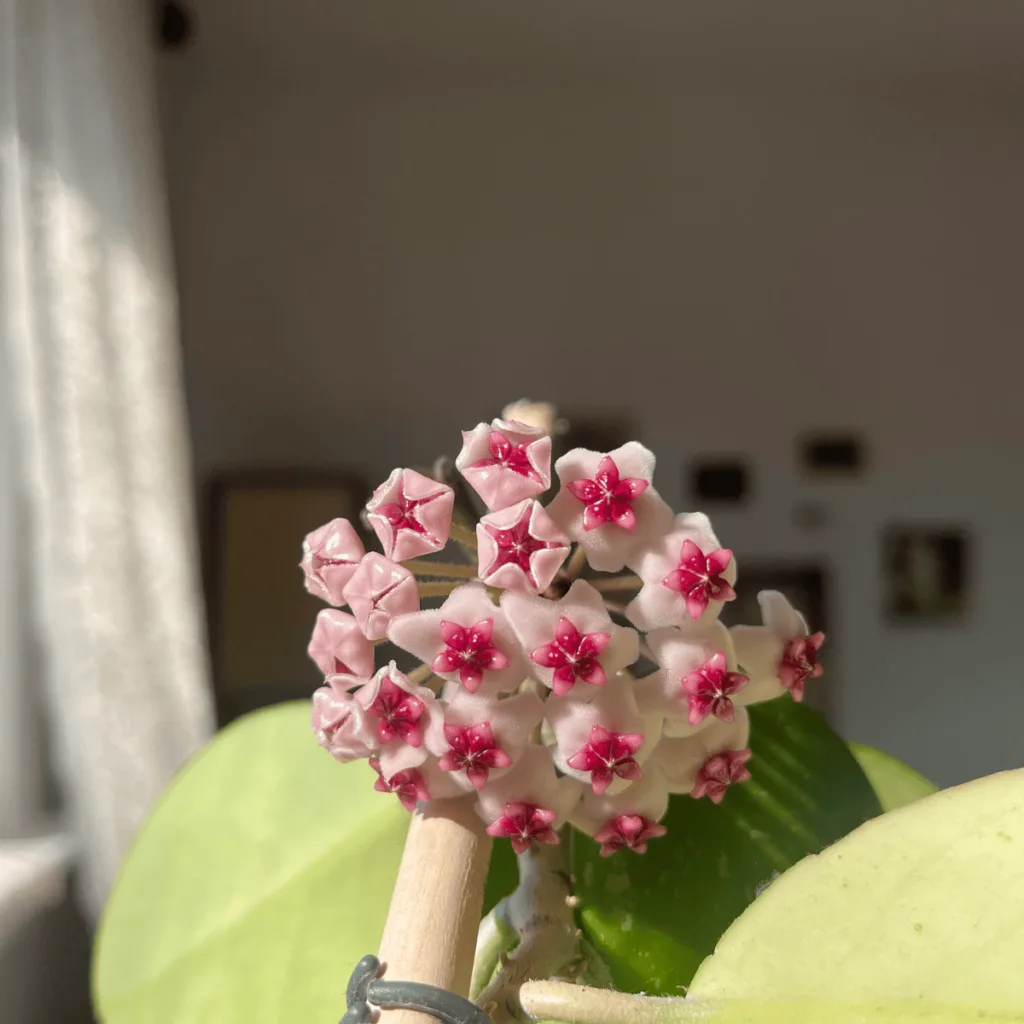
Meaning: The name “Obovata” describes its oval-shaped leaves.
Features: Has large, round leaves and produces fragrant, pink flowers.
5. Hoya australis
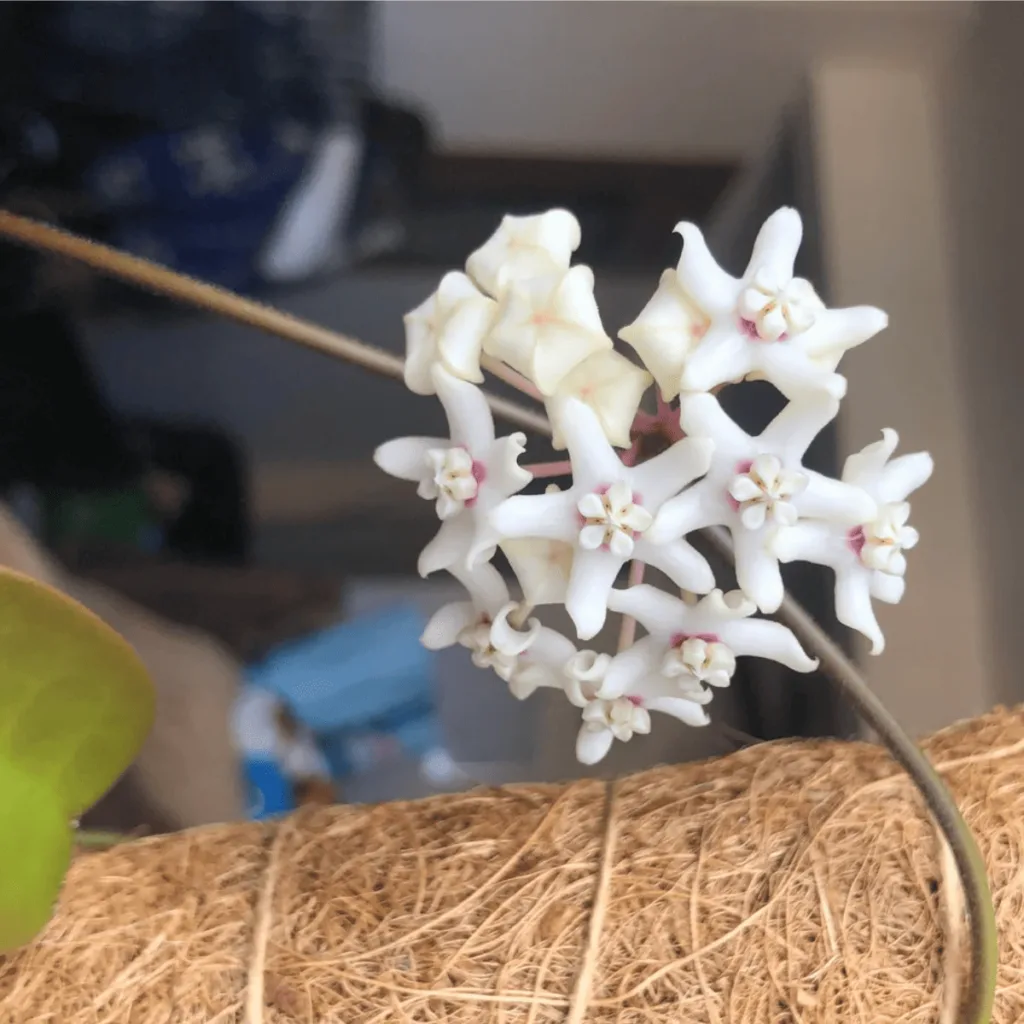
Meaning: “Australis” means “southern,” and this name references its native habitat in Australia.
Features: Distinct by its lush green leaves and white, fragrant flowers.
Geographic Variation in Hoya Names
Hoyas are native to diverse regions across Asia and Australia, and their names are often tied to these locations. For example, many Australian species of Hoya have a name indicating that (eg. Hoya australis, Hoya macgillivrayi, Hoya nicholsoniae) while others are named after places in Southeast Asia (Hoya burmanica, Hoya siamica)
Common Challenges in Hoya Nomenclature
1. Mislabeling in Nurseries
Hoyas are often mislabeled, especially hybrids and rarer varieties. This is due to a variety of reasons, including a lack of proper training, or not having the correct identification keys. Double checking with credible sources can ensure that you are accurately identifying your plants.
2. Regional Differences in Common Names
A single Hoya species may have several common names, causing confusion for people that are learning about plants. Scientific names can help to prevent confusion in the plant community.
3. Reclassification of Species
Botanical research can lead to reclassification of plants. As our understanding of the morphology and genetics of Hoyas grows, changes are made to align names with the proper taxonomy.
4. Hybrid Complexity
Hybrids can be complex to classify due to variations in their parentage, also the stability of the plant may change over time as they continue to be bred and cultivated. This may lead to difficulty in properly assigning a name to a new plant.
5. Incomplete Databases
While many resources are available for Hoyas, not all databases are complete, and some may lack accurate photographs. The taxonomy for Hoyas is often changing, so it is always important to use the most recent resources.
Utilizing Identification Keys
To properly identify Hoyas, taxonomists use identification keys. These keys utilize a series of questions that can help narrow down the identification of a plant. The most common type is a dichotomous key, where at each step, the user has to pick between two choices, which will lead to the next choice in the series, until the end of the key, which will lead to the proper identification. It is important to note that keys require detailed observation skills of the plant and proper botanical language.
Conclusion
Hoya nomenclature forms the bedrock for understanding the varied and enchanting world of Hoyas. By learning how these plants are named and classified, you will be able to appreciate their unique characteristics, share knowledge, and provide the proper care that they need. Whether you are a beginner learning about basic species or a collector who is searching for rare hybrids, mastering Hoya nomenclature can enhance your experiences with these plants. Start your journey today and enjoy the rich beauty and history of Hoyas through their names!
FAQs About Hoya Nomenclature
Scientific names provide a universal language to identify plants and overcome issues with common names that may vary from one place to another.
“Variegata” refers to a plant with patterned leaves, such as cream, white, or yellow portions mixed with the standard green.
Hybrids are named by combining the parent species’ names or assigning a unique cultivar name.
Yes, some Hoyas may have synonyms, due to reclassification or regional differences, but only one name is considered valid under the ICN rules.
Observe the plant’s leaf shape, size, texture, as well as the flower structure, color, and smell, then compare these features with images and descriptions from botanical references or online databases. You can also use dichotomous keys to narrow down possibilities.
There are several websites that you can use to help you with Hoya nomenclature:
–The International Plant Names Index
–World Flora Online
-The Plant List
-Various Hoya forums and communities, where you can engage with other enthusiasts

